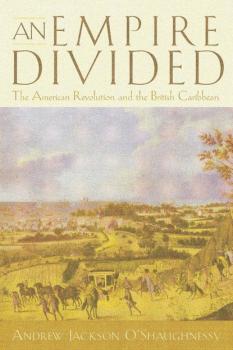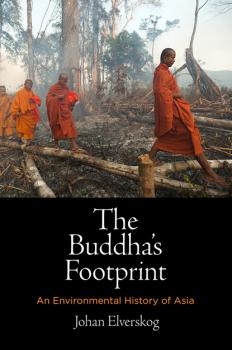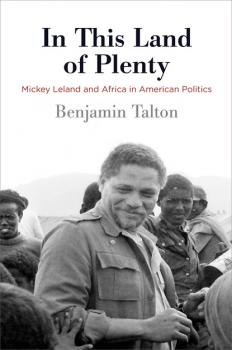ТОП просматриваемых книг сайта:
Историческая литература
Различные книги в жанре Историческая литература, доступные для чтения и скачиванияАннотация
The former French colony of Acadia—permanently renamed Nova Scotia by the British when they began an ambitious occupation of the territory in 1710—witnessed one of the bitterest struggles in the British empire. Whereas in its other North American colonies Britain assumed it could garner the sympathies of fellow Europeans against the native peoples, in Nova Scotia nothing was further from the truth. The Mi'kmaq, the native local population, and the Acadians, descendants of the original French settlers, had coexisted for more than a hundred years prior to the British conquest, and their friendships, family ties, common Catholic religion, and commercial relationships proved resistant to British-enforced change. Unable to seize satisfactory political control over the region, despite numerous efforts at separating the Acadians and Mi'kmaq, the authorities took drastic steps in the 1750s, forcibly deporting the Acadians to other British colonies and systematically decimating the remaining native population. The story of the removal of the Acadians, some of whose descendants are the Cajuns of Louisiana, and the subsequent oppression of the Mi'kmaq has never been completely told. In this first comprehensive history of the events leading up to the ultimate break-up of Nova Scotian society, Geoffrey Plank skillfully unravels the complex relationships of all of the groups involved, establishing the strong bonds between the Mi'kmaq and Acadians as well as the frustration of the British administrators that led to the Acadian removal, culminating in one of the most infamous events in North American history.
Аннотация
There were 26—not 13—British colonies in America in 1776. Of these, the six colonies in the Caribbean—Jamaica, Barbados, the Leeward Islands, Grenada and Tobago, St. Vincent; and Dominica—were among the wealthiest. These island colonies were closely related to the mainland by social ties and tightly connected by trade. In a period when most British colonists in North America lived less than 200 miles inland and the major cities were all situated along the coast, the ocean often acted as a highway between islands and mainland rather than a barrier. The plantation system of the islands was so similar to that of the southern mainland colonies that these regions had more in common with each other, some historians argue, than either had with New England. Political developments in all the colonies moved along parallel tracks, with elected assemblies in the Caribbean, like their mainland counterparts, seeking to increase their authority at the expense of colonial executives. Yet when revolution came, the majority of the white island colonists did not side with their compatriots on the mainland. A major contribution to the history of the American Revolution, An Empire Divided traces a split in the politics of the mainland and island colonies after the Stamp Act Crisis of 1765-66, when the colonists on the islands chose not to emulate the resistance of the patriots on the mainland. Once war came, it was increasingly unpopular in the British Caribbean; nonetheless, the white colonists cooperated with the British in defense of their islands. O'Shaughnessy decisively refutes the widespread belief that there was broad backing among the Caribbean colonists for the American Revolution and deftly reconstructs the history of how the island colonies followed an increasingly divergent course from the former colonies to the north.
Аннотация
Independence Hall is a place Americans think they know well. Within its walls the Continental Congress declared independence in 1776, and in 1787 the Founding Fathers drafted the U.S. Constitution there. Painstakingly restored to evoke these momentous events, the building appears to have passed through time unscathed, from the heady days of the American Revolution to today. But Independence Hall is more than a symbol of the young nation. Beyond this, according to Charlene Mires, it has a long and varied history of changing uses in an urban environment, almost all of which have been forgotten. In Independence Hall , Mires rediscovers and chronicles the lost history of Independence Hall, in the process exploring the shifting perceptions of this most important building in America's popular imagination. According to Mires, the significance of Independence Hall cannot be fully appreciated without assessing the full range of political, cultural, and social history that has swirled about it for nearly three centuries. During its existence, it has functioned as a civic and cultural center, a political arena and courtroom, and a magnet for public celebrations and demonstrations. Artists such as Thomas Sully frequented Independence Square when Philadelphia served as the nation's capital during the 1790s, and portraitist Charles Willson Peale merged the arts, sciences, and public interest when he transformed a portion of the hall into a center for natural science in 1802. In the 1850s, hearings for accused fugitive slaves who faced the loss of freedom were held, ironically, in this famous birthplace of American independence. Over the years Philadelphians have used the old state house and its public square in a multitude of ways that have transformed it into an arena of conflict: labor grievances have echoed regularly in Independence Square since the 1830s, while civil rights protesters exercised their right to free speech in the turbulent 1960s. As much as the Founding Fathers, these people and events illuminate the building's significance as a cultural symbol.
Аннотация
Essential reading for students of African-American history The distinguished American civil rights leader, W. E. B. Du Bois first published these fiery essays, sketches, and poems individually nearly 80 years ago in the Atlantic, the Journal of Race Development, and other periodicals. Part essay, part autobiography, Darkwater explicitly addresses significant issues, such as the oppression of women and Eurocentric standards of beauty, the historical rise of the idea of whiteness, and the abridgement of democracy along race, class, and gender lines. Reflecting the author’s ideas as a politician, historian, and artist, this volume has long moved and inspired readers with its militant cry for social, political, and economic reforms for black Americans.
Аннотация
Examining a series of El Niño-induced droughts and the famines that they spawned around the globe in the last third of the 19th century, Mike Davis discloses the intimate, baleful relationship between imperial arrogance and natural incident that combined to produce some of the worst tragedies in human history. Late Victorian Holocausts focuses on three zones of drought and subsequent famine: India, Northern China; and Northeastern Brazil. All were affected by the same global climatic factors that caused massive crop failures, and all experienced brutal famines that decimated local populations. But the effects of drought were magnified in each case because of singularly destructive policies promulgated by different ruling elites. Davis argues that the seeds of underdevelopment in what later became known as the Third World were sown in this era of High Imperialism, as the price for capitalist modernization was paid in the currency of millions of peasants' lives.
Аннотация
The first lesbian and queer historical geography of New York City Over the past few decades, rapid gentrification in New York City has led to the disappearance of many lesbian and queer spaces, displacing some of the most marginalized members of the LGBTQ+ community. In A Queer New York , Jen Jack Gieseking highlights the historic significance of these spaces, mapping the political, economic, and geographic dispossession of an important, thriving community that once called certain New York neighborhoods home.Focusing on well-known neighborhoods like Greenwich Village, Park Slope, Bedford-Stuyvesant, and Crown Heights, Gieseking shows how lesbian and queer neighborhoods have folded under the capitalist influence of white, wealthy gentrifiers who have ultimately failed to make room for them. Nevertheless, they highlight the ways lesbian and queer communities have succeeded in carving out spaces—and lives—in a city that has consistently pushed its most vulnerable citizens away.Beautifully written, A Queer New York is an eye-opening account of how lesbians and queers have survived in the face of twenty-first century gentrification and urban development.
Аннотация
In the current popular imagination, Buddhism is often understood to be a religion intrinsically concerned with the environment. The Dharma, the name given to Buddhist teachings by Buddhists, states that all things are interconnected. Therefore, Buddhists are perceived as extending compassion beyond people and animals to include plants and the earth itself out of a concern for the total living environment. In The Buddha's Footprint , Johan Elverskog contends that only by jettisoning this contemporary image of Buddhism as a purely ascetic and apolitical tradition of contemplation can we see the true nature of the Dharma. According to Elverskog, Buddhism is, in fact, an expansive religious and political system premised on generating wealth through the exploitation of natural resources. Elverskog surveys the expansion of Buddhism across Asia in the period between 500 BCE and 1500 CE, when Buddhist institutions were built from Iran and Azerbaijan in the west, to Kazakhstan and Siberia in the north, Japan in the east, and Sri Lanka and Indonesia in the south. He examines the prosperity theology at the heart of the Dharma that declared riches to be a sign of good karma and the means by which spritiual status could be elevated through donations bequeathed to Buddhist institutions. He demonstrates how this scriptural tradition propelled Buddhists to seek wealth and power across Asia and to exploit both the people and the environment. Elverskog shows the ways in which Buddhist expansion not only entailed the displacement of local gods and myths with those of the Dharma—as was the case with Christianity and Islam—but also involved fundamentally transforming earlier social and political structures and networks of economic exchange. The Buddha's Footprint argues that the institutionalization of the Dharma was intimately connected to agricultural expansion, resource extraction, deforestation, urbanization, and the monumentalization of Buddhism itself.
American Political Development and the Trump Presidency - Группа авторов
American Governance: Politics, Policy, and Public LawАннотация
In virtually all respects, the Trump presidency has disrupted patterns of presidential governance. However, does Trump signify a disruption, not merely in political style but in regime type in the United States? Assessing Trump's potential impact on democratic institutions requires an analysis of how these institutions—including especially the executive branch—have developed over time as well as an examination of the intersecting evolution of political parties, racial ideologies, and governing mechanisms. To explore how time and temporality have shaped the Trump presidency, editors Zachary Callen and Philip Rocco have brought together scholars in the research tradition of American political development (APD), which explicitly aims to consider how interactions between a range of institutions result in the shifting of power and authority in American politics, with careful attention paid to complex processes unfolding over time. By focusing on the factors that contribute to both continuity and change in American politics, APD is ideally situated to take a long view and help make sense of the Trump presidency. American Political Development and the Trump Presidency features contributions by leading political scientists grappling with the reasons why Donald Trump was elected and the meaning of his presidency for the future of American politics. Taking a historical and comparative approach—instead of viewing Trump's election as a singular moment in American politics—the essays here consider how Trump's election coincides with larger changes in democratic ideals, institutional structures, long-standing biases, and demographic trends. The Trump presidency, as this volume demonstrates, emerged from a gradual unsettling of ideational and institutional lineages. In turn, these essays consider how Trump's disruptive style of governance may further unsettle the formal and informal rules of American political life. Contributors: William D. Adler, Gwendoline Alphonso, Julia R. Azari, Zachary Callen, Megan Ming Francis, Daniel J. Galvin, Travis M. Johnston, Andrew S. Kelly, Robert C. Lieberman, Paul Nolette, Philip Rocco, Adam Sheingate, Chloe Thurston.
Информация о книге
Автор произведения Группа авторов
Аннотация
On August 7, 1989, Congressman Mickey Leland departed on a flight from Addis Ababa, with his thirteen-member delegation of Ethiopian and American relief workers and policy analysts, bound for Ethiopia's border with Sudan. This was Leland's seventh official humanitarian mission in his nearly decade-long drive to transform U.S. policies toward Africa to conform to his black internationalist vision of global cooperation, antiracism, and freedom from hunger. Leland's flight never arrived at its destination. The plane crashed, with no survivors. When Leland embarked on that delegation, he was a forty-four-year-old, deeply charismatic, fiercely compassionate, black, radical American. He was also an elected Democratic representative of Houston's largely African American and Latino Eighteenth Congressional District. Above all, he was a self-proclaimed «citizen of humanity.» Throughout the 1980s, Leland and a small group of former radical-activist African American colleagues inside and outside Congress exerted outsized influence to elevate Africa's significance in American foreign affairs and to move the United States from its Cold War orientation toward a foreign policy devoted to humanitarianism, antiracism, and moral leadership. Their internationalism defined a new era of black political engagement with Africa. In This Land of Plenty presents Leland as the embodiment of larger currents in African American politics at the end of the twentieth century. But a sober look at his aspirations shows the successes and shortcomings of domestic radicalism and aspirations of politically neutral humanitarianism during the 1980s, and the extent to which the decade was a major turning point in U.S. relations with the African continent. Exploring the links between political activism, electoral politics, and international affairs, Benjamin Talton not only details Leland's political career but also examines African Americans' successes and failures in influencing U.S. foreign policy toward African and other Global South countries.
Информация о книге
Автор произведения Benjamin Talton
Аннотация
Contrary to popular belief, the American Revolutionary War was not a limited and restrained struggle for political self-determination. From the onset of hostilities, British authorities viewed their American foes as traitors to be punished, and British abuse of American prisoners, both tacitly condoned and at times officially sanctioned, proliferated. Meanwhile, more than seventeen thousand British and allied soldiers fell into American hands during the Revolution. For a fledgling nation that could barely afford to keep an army in the field, the issue of how to manage prisoners of war was daunting. Captives of Liberty examines how America's founding generation grappled with the problems posed by prisoners of war, and how this influenced the wider social and political legacies of the Revolution. When the struggle began, according to T. Cole Jones, revolutionary leadership strove to conduct the war according to the prevailing European customs of military conduct, which emphasized restricting violence to the battlefield and treating prisoners humanely. However, this vision of restrained war did not last long. As the British denied customary protections to their American captives, the revolutionary leadership wasted no time in capitalizing on the prisoners' ordeals for propagandistic purposes. Enraged, ordinary Americans began to demand vengeance, and they viewed British soldiers and their German and Native American auxiliaries as appropriate targets. This cycle of violence spiraled out of control, transforming the struggle for colonial independence into a revolutionary war. In illuminating this history, Jones contends that the violence of the Revolutionary War had a profound impact on the character and consequences of the American Revolution. Captives of Liberty not only provides the first comprehensive analysis of revolutionary American treatment of enemy prisoners but also reveals the relationship between America's political revolution and the war waged to secure it.










